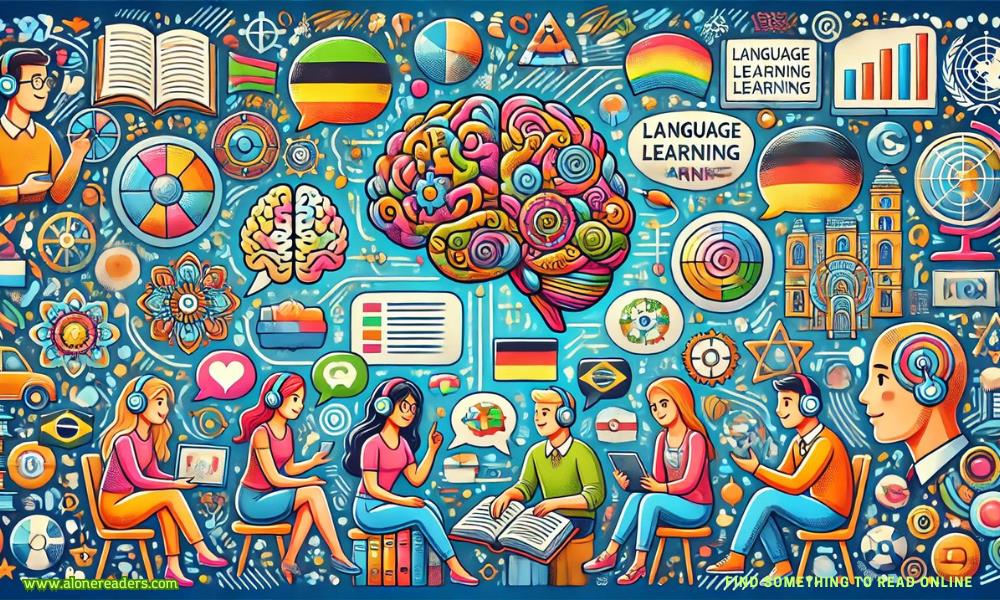
Language learning is a multifaceted endeavor that involves more than just memorizing vocabulary and grammar rules. It is a process that engages cognitive, emotional, and social dimensions, making it both a challenging and rewarding pursuit. The complexity of language learning stems from various factors, including the intrinsic characteristics of the language, the learner's background, and the learning environment. Understanding these complexities can help learners navigate the journey more effectively and achieve greater proficiency.
One of the primary challenges in language learning is the cognitive load it imposes on the brain. Learning a new language requires the brain to build and strengthen neural connections that are different from those used in the learner's native language. This involves acquiring new sounds, structures, and patterns, which can be taxing on the working memory. The process of parsing sentences, understanding context, and producing coherent speech requires significant mental effort, especially in the early stages of learning.
Furthermore, the differences between the learner's native language and the target language can affect the ease of learning. Languages that share common roots or structural similarities with the learner's native language may be easier to learn. For instance, a Spanish speaker may find it easier to learn Italian due to their shared Latin roots. Conversely, languages with entirely different phonetic, grammatical, and syntactic systems, such as Chinese for an English speaker, present greater challenges. These differences can lead to interference, where the rules of the native language conflict with those of the target language, causing errors and confusion.
Cultural factors also play a significant role in language learning. Language is deeply intertwined with culture, and understanding the cultural context of a language can enhance comprehension and communication. Cultural nuances, idiomatic expressions, and social norms embedded in the language require learners to not only learn the linguistic elements but also adapt to the cultural mindset. For example, the way politeness and formality are expressed in Japanese is quite different from English, and mastering these subtleties is crucial for effective communication.
Motivation and emotional factors significantly influence the language learning process. Learners with a strong intrinsic motivation, driven by personal interest or a desire for cultural connection, are more likely to persist and succeed in learning a new language. However, language anxiety, fear of making mistakes, and negative past experiences can hinder progress. Creating a supportive and encouraging learning environment can help mitigate these emotional barriers and foster a positive learning experience.
The learning environment and resources available to learners also impact the success of language acquisition. Immersion in a language-rich environment, where the learner is exposed to the target language regularly through conversations, media, and interactions, can accelerate learning. Technological advancements have provided learners with access to a plethora of resources, such as language learning apps, online courses, and virtual exchanges, making it easier to practice and reinforce language skills. However, the quality and effectiveness of these resources vary, and learners must be discerning in choosing tools that suit their learning style and goals.
Effective language learning strategies are essential to navigate the complexities of language acquisition. One such strategy is spaced repetition, which involves reviewing and practicing language elements at increasing intervals to enhance retention. This technique leverages the spacing effect, a psychological phenomenon that suggests information is more easily recalled when exposure is spread over time. Additionally, engaging in active language use through speaking, writing, and interactive exercises helps reinforce learning and build fluency.
Another important strategy is leveraging context and immersion. Contextual learning, where language is learned in meaningful and relevant situations, aids in better comprehension and retention. Immersion experiences, such as studying abroad or participating in language exchange programs, provide authentic exposure to the language and culture, allowing learners to practice and apply their skills in real-life scenarios.
Language learning is also a social activity, and interaction with native speakers or fellow learners can significantly enhance the process. Language exchange partnerships, conversation clubs, and online communities provide opportunities for learners to practice speaking, receive feedback, and gain cultural insights. These social interactions not only improve language proficiency but also build confidence and reduce language anxiety.
Despite the challenges, language learning offers numerous cognitive, personal, and professional benefits. It enhances cognitive abilities, such as problem-solving, multitasking, and memory. Learning a new language also fosters cultural awareness and empathy, broadening the learner's perspective and enhancing intercultural communication skills. Professionally, bilingualism or multilingualism can open doors to diverse career opportunities and increase employability in a globalized job market.
In conclusion, the complexity of language learning arises from the interplay of cognitive, cultural, and emotional factors. While the process can be demanding, understanding these complexities and adopting effective learning strategies can lead to successful language acquisition. Embracing the challenges and immersing oneself in the language and culture can transform the learning journey into a rewarding and enriching experience.